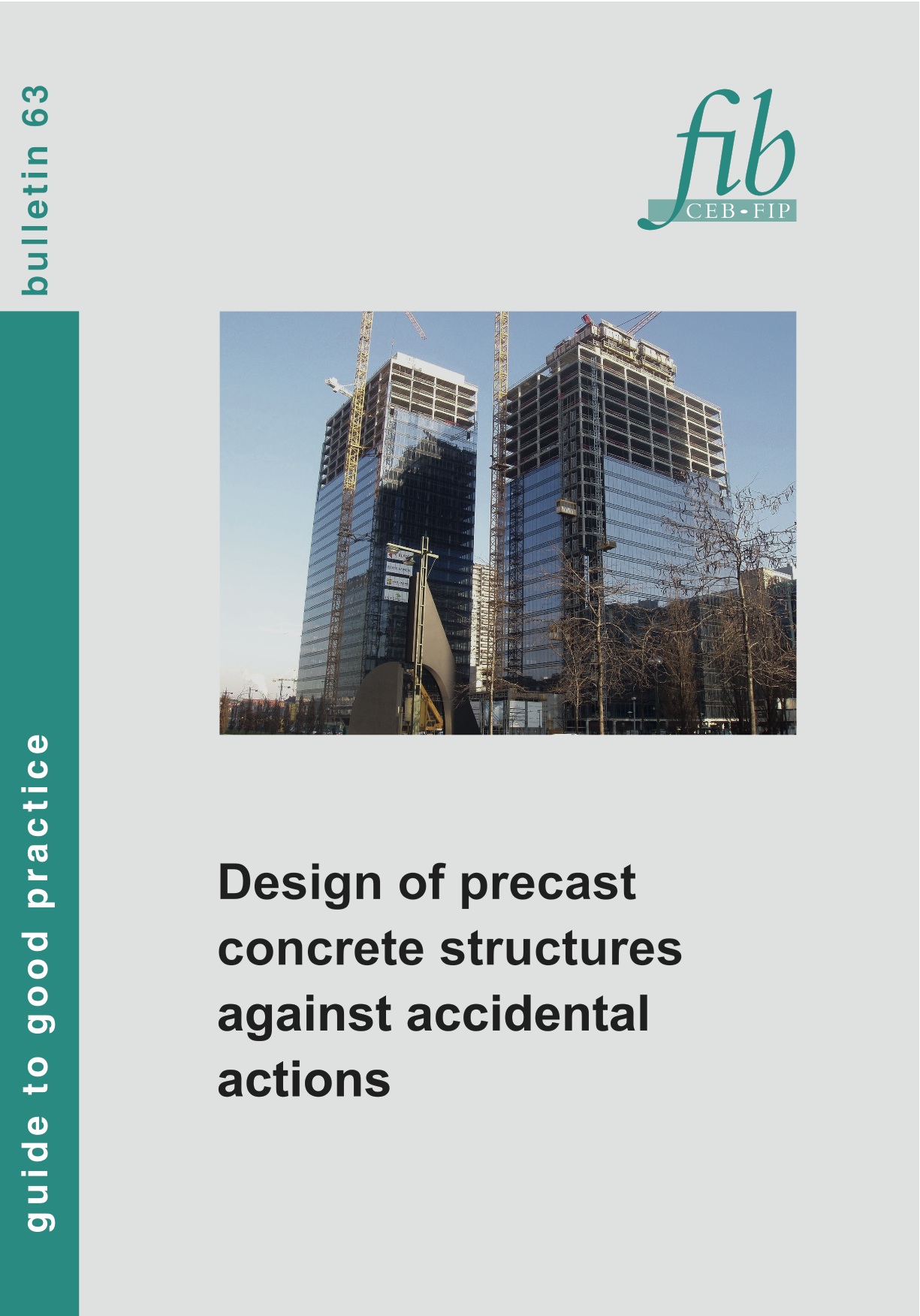Design of precast concrete structures against accidental actions
fib Bulletin No. 63
Title: Design of precast concrete structures against accidental actions
Category: Guide to good practice
Year: 2012
Pages: 78
Format approx. DIN A4 (210x297 mm)
ISBN: 978-2-88394-103-8
Abstract:
Since the 1980’s, several buildings throughout the world have been subject to gas explosions, impact by cars or airplanes, or car bomb attacks. In many cases the effect of the impact or explosion has been the failure of a critical structural member at the perimeter of the building. After the failure, the load supported by that member could not be redistributed and part or all of the structure has collapsed in a progressive manner. The phenomenon that occurs when local failure is not confined to the area of initial distress, and spreads horizontally and/or vertically through the structure, is termed progressive collapse.
Progressive collapse is a relatively rare event, as it requires both an accidental action to cause local damage and a structure that lacks adequate continuity, ductility, and redundancy to prevent the spread of damage. It is technically very difficult and economically prohibitive to design buildings for absolute safety. However it is possible to construct precast concrete buildings that afford an acceptable degree of safety with regard to accidental actions.
A structure is normally designed to respond properly, without damage, under normal load conditions, but local and/or global damages cannot be avoided under the effect of an unexpected, but moderate degree of accidental overload. Properly designed and constructed structures usually possess reasonable probability not to collapse catastrophically under such loads, depending on different factors, for example:
- the type of loading;
- the degree and the location of accidental loading in regard to the structure and its structural members;
- the type of structural system, the construction technology, and the spans between structural vertical members, etc.
No structure can be expected to be totally resistant to actions arising from an unexpected and extreme cause, but it should not be damaged to an extent that is disproportionate to the original cause.
The aim of fib Bulletin 63 is to summarize the present knowledge on the subject and to provide guidance for the design of precast structures against progressive collapse. This is addressed in terms of (a) the classification of the actions, (b) their effect on the structural types, (c) the strategies to cope with such actions, (d) the design methods and (e) some typical detailing, all supplemented with illustrations from around the world, and some model calculations.
Download the copyright page (= list of authors) as a PDF file.
Download the table of contents as a PDF file.



